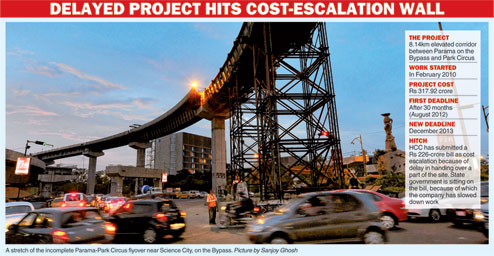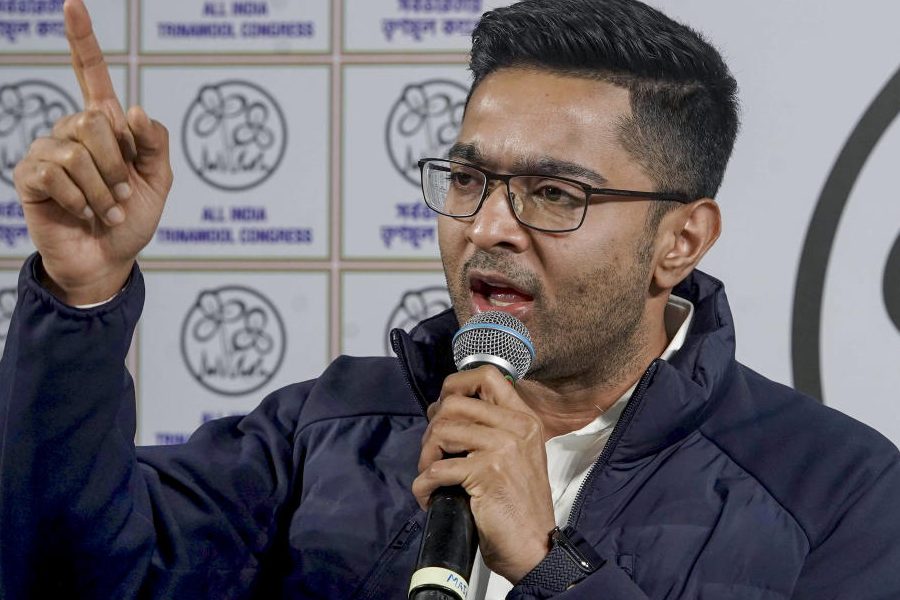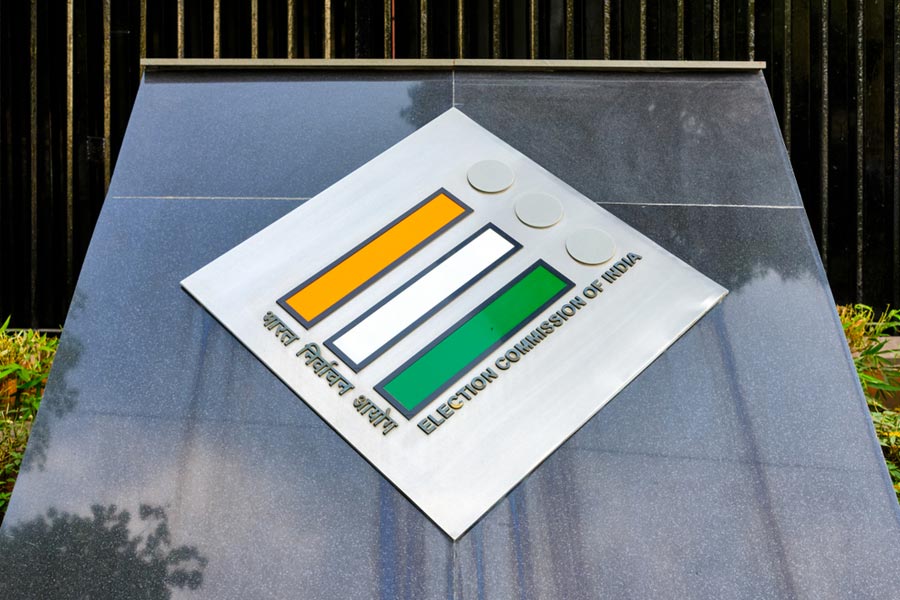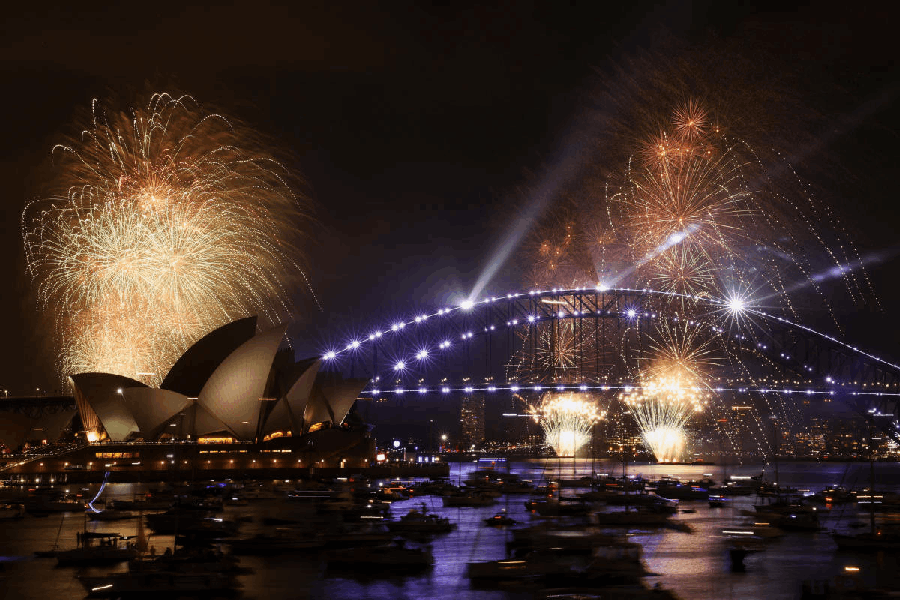 |
The hand that crafted Mumbai’s spectacular Bandra-Worli Sea Link will build Calcutta’s longest flyover, starting December, linking the Science City island on the EM Bypass to Park Circus with two aerial rotaries 4.3km apart.
The giant project has been brought out of cold storage after four years — the delay having pushed up the estimated cost from Rs 291 crore to Rs 317.93 crore — as if to underline a beleaguered government’s commitment to fast-track growth in the run-up to Poll 2011.
“It will take two years for the project to be completed. Once the flyover is done, EM Bypass to Park Circus will be a fast-track corridor,” Vivek Bharadwaj, the CEO of the Calcutta Metropolitan Development Authority (CMDA) told Metro.
The urban development department zeroed in on Hindustan Construction Company from six bidders to implement the project, its eight-lane, cable-stayed sea bridge in Mumbai having been acclaimed as a modern engineering marvel.
The decks were cleared for the revival of what was threatening to end up as another dud project of the Buddhadeb Bhattacharjee government when the Union urban development ministry agreed to pay 35 per cent of the original project cost.
“The state government will bear the remaining expenses considering the long-term benefits. This 4.3km flyover will bear most of the traffic load from the eastern fringes to the city,” said an official of the urban development department.
The plan says there will be two tiers at the Parama intersection, off Science City, to feed and shoulder the burden of traffic headed towards Ultadanga and Garia. One arm of the flyover will run over Congress Exhibition Road and Syed Amir Ali Avenue. A ‘D’ above the Park Circus rotary will link it to the flyover.
“Test piling will start in mid-December to identify how much load a single pier of the flyover can bear. Once this is done, with soil testing, boring operations will begin. Each of the piers will run 30-32 metres deep,” said Debdas Bhattacharya, the director-general (operations) of the CMDA.
The entire stretch will be a four-lane corridor with a divider down the middle. The divider will have a central median duct to carry cables and other wires from end to end.
A 30-metre patch below the No. 4 bridge will be constructed by the railways after the old bridge is dismantled.
The bad news is that the road to smoother traffic along one of the city’s chaos corridors would be a long, bumpy one for the commuter because of construction bottlenecks at critical junctions. The construction of a ramp on the AJC Bose Road flyover has already thrown traffic haywire in the heart of the city.
“There will be diversions at both the Parama and Park Circus junctions, though we cannot be more specific yet,” said a senior traffic police officer, adding that traffic trouble was “inevitable”.
The police have asked the CMDA to ensure that Hindustan Construction Company specifies the bottleneck zones clearly in its construction plan before commencing work. How to implement the project with minimal traffic disruptions will be worked out on December 20 when police officers meet representatives of the company and the urban development department.
But then, as the 3km AJC Bose Road flyover had kept reminding us while it was coming up, today’s pain is meant to be tomorrow’s gain.











